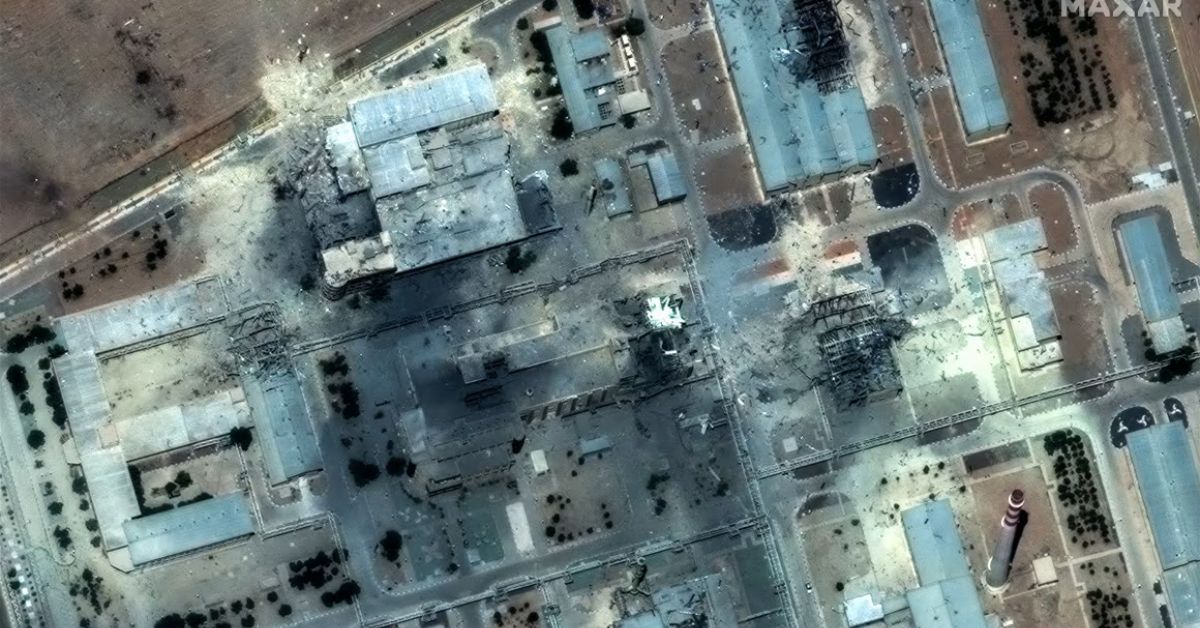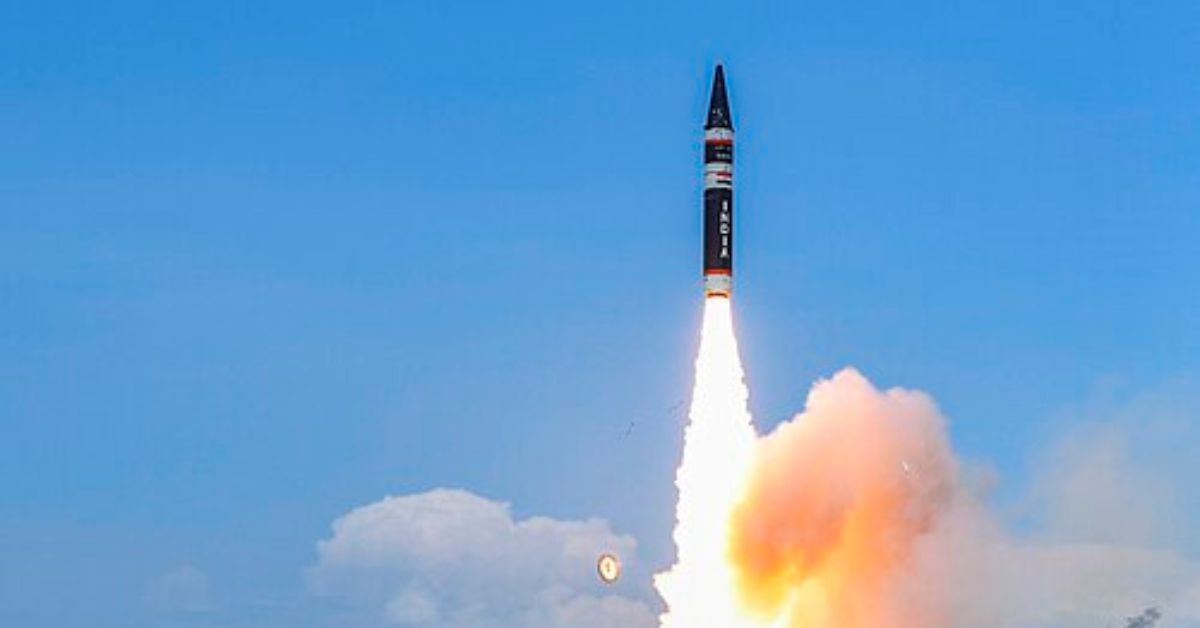What Is The Nuclear Non-Proliferation Treaty & Why India Chose Not to Sign It?
Feature image courtesy Agni-5 missile during the Indian Republic Day parade in Delhi in 2013. Photo credits: Raveendran/AFP/Getty Images via Bloomberg.
The history of nuclear energy and global treaties has shaped many international conversations around safety, energy needs, and scientific progress. One such treaty, the Treaty on the Non-Proliferation of Nuclear Weapons (NPT), was created to prevent the spread of nuclear weapons while promoting peaceful uses of nuclear energy.
In recent times, discussions around the NPT have resurfaced as countries like Iran have raised questions about the treaty’s ability to support nations pursuing civilian nuclear programs. Iranian leaders have highlighted concerns about whether the treaty can effectively balance security and the right to develop peaceful nuclear technology.
At the heart of this global conversation is the ongoing need to find ways to responsibly develop nuclear energy while ensuring safety and trust among nations. The NPT has played a key role in these efforts, but it continues to evolve alongside advancements in nuclear science and changing energy demands.
These discussions are especially significant in regions where energy security is a top priority and where nations are exploring alternative energy sources to meet the needs of growing populations.
Ultimately, the dialogue around nuclear governance, transparency, and sustainable energy remains an important part of the global effort to ensure that nuclear science can serve peaceful, constructive purposes for all.
Why was the NPT designed? A detailed breakdown
The Treaty on the Non-Proliferation of Nuclear Weapons (NPT) is one of the most widely supported international agreements, designed to address the devastating potential of nuclear warfare.
The catalyst: Hiroshima and Nagasaki (1945)
The atomic bombings of Hiroshima and Nagasaki in August 1945 resulted in an estimated 214,000 deaths within months, with long-term suffering from radiation exposure continuing for decades.
These catastrophic events revealed the unimaginable destructive power of nuclear weapons and sparked urgent, global demands to prevent future nuclear disasters.
Rising global concern: The nuclear arms race
By the late 1950s and early 1960s, the world had witnessed an accelerating arms race:
- Between 1945 and 1962, over 300 nuclear tests were conducted by the United States, the Soviet Union, the United Kingdom, and others.
- Both superpowers rapidly stockpiled nuclear weapons, raising fears of global annihilation.
Recognising the growing threat, in 1961, the United Nations General Assembly passed Resolution 1665, calling for a treaty to stop the spread of nuclear weapons.
 A satellite image shows the Isfahan Nuclear Complex after US strikes on the site. Picture source: Maxar Technologies via CNN
A satellite image shows the Isfahan Nuclear Complex after US strikes on the site. Picture source: Maxar Technologies via CNN
- Drafted: 1968
- Came Into Force: 1970
- Key Objectives:
- Prevent the spread of nuclear weapons and related technology.
- Promote the peaceful use of nuclear energy.
- Work towards global nuclear disarmament.
The NPT established a global framework to ensure that nuclear energy could be developed for civilian purposes without leading to weaponisation.
Global participation: Who signed and who didn’t
As of today, 191 countries are signatories to the NPT, making it one of the most universally accepted international treaties.
However, four countries remain outside the treaty:
- India
- Pakistan
- Israel
- South Sudan
India, Pakistan, and Israel developed nuclear weapons outside the NPT framework, while South Sudan, as a newly formed nation, has yet to sign.
Withdrawal clause: Article 10
The NPT includes Article 10, which allows any member state to withdraw if it decides that extraordinary events related to the treaty jeopardise its national interests.
North Korea is the most notable example of withdrawal.
- In 2003, North Korea withdrew from the treaty and subsequently declared itself a nuclear-armed state.
 The Agni-P during its first test launch in 2021. Picture source: Wikipedia
The Agni-P during its first test launch in 2021. Picture source: Wikipedia
Why the NPT remains important
The NPT continues to be central to global nuclear governance, but its effectiveness is still widely debated. It plays a critical role in:
- Promoting nuclear disarmament efforts.
- Ensuring equitable access to peaceful nuclear technology.
- Building global trust in non-proliferation frameworks.
Despite occasional challenges and regional complexities, the NPT remains a key pillar in the effort to balance national energy development with global security.
When it comes to nuclear policy, India has always taken a firm, independent path. While 191 countries around the world have signed the Treaty on the Non-Proliferation of Nuclear Weapons (NPT), India is one of the few that has consistently refused. But why?
The answer lies in fairness, global power structures, and regional security.
The core issue: An unequal treaty
India’s primary objection to the NPT is that it creates two classes of nations:
- The “nuclear haves” — the five countries allowed to possess nuclear weapons: the United States, Russia, China, France, and the United Kingdom.
- The “nuclear have-nots” — all other signatory countries, which are permanently banned from developing nuclear weapons.
From India’s perspective, this is not a balanced global agreement—it’s a system that locks in the power of a select few while denying the same rights to others. India believes that if global disarmament is the true goal, then all nuclear states should eventually be expected to denuclearise—not just those who weren’t “grandfathered” into the treaty.
In simple terms:
“Why should some countries be allowed to keep their nuclear weapons forever while others are permanently forbidden from having them?”
This has been at the heart of India’s position for decades.
The regional reality: Security concerns
India’s refusal to sign the NPT isn’t just about fairness—it’s also about practical security.
- China became a nuclear power in 1964, well before the NPT was signed.
- Pakistan developed nuclear weapons outside the NPT framework, intensifying security tensions in South Asia.
For India, signing the NPT would have meant giving up its right to develop nuclear weapons in a region where two of its neighbours already had them.
Given these realities, India decided to maintain its strategic flexibility.
India’s nuclear philosophy: No first use
While India is not a part of the NPT, it has always emphasised responsibility and restraint.
India’s nuclear doctrine is built around the ‘No First Use’ policy, which means:
- India will never use nuclear weapons unless it is attacked first by nuclear weapons.
- Its nuclear arsenal is purely a deterrent, not a weapon of aggression.
This principle reflects India’s broader vision: nuclear weapons should only exist to prevent war, not to fight one. India also supports the long-term goal of a nuclear-weapon-free world, but it insists that disarmament must be fair and universal.
Why this matters
India’s decision not to sign the NPT isn’t about defiance—it’s about seeking an agreement that respects equal rights and real-world security concerns.
While India remains outside the treaty, it has continued to advocate for responsible nuclear behaviour and has built international trust through agreements like the Civil Nuclear Deal with the United States in 2008, which recognised India’s nuclear program without NPT membership.
In the bigger picture, India’s stand highlights the complex balance between global ideals and regional realities, and the ongoing challenge of creating fair frameworks in international diplomacy.
Edited by Leila Badyari
News